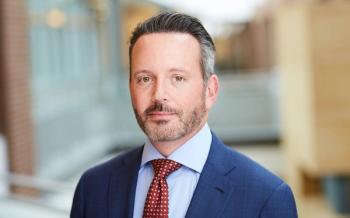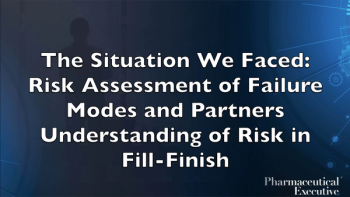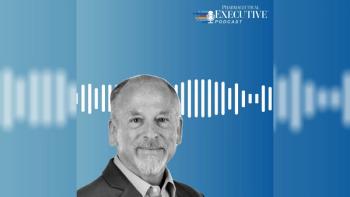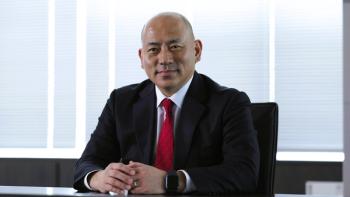Organizations like the Alzheimer’s Drug Discovery Foundation (ADDF) have always been an important part of the life sciences industry. As a venture philanthropy, it seeks out promising early-stage drug discovery and development and biomarker projects and makes investments into academic programs and biotechs. Traditionally, organizations like this have served as a bridge between academia and industry. Due to recent funding cuts at the NIH, the ADDF now plays a much more important role. New drug research continues, and the organization’s CFO Karen B. Harris spoke with Pharmaceutical Executive about the areas of research the ADDF is interested in and how its navigating the current funding environment.
Key Takeaways
- The ADDF's goal is to invest in translational science.
- The ADDF believes that the future of Alzheimer's treatment is going to be combination therapy and then precision medicine.
- Pharma will likely recognize that Alzheimer's and the aging population is going to be a huge market.
What role does the ADDF play in the Alzheimer's research ecosystem?
Pharmaceutical Executive: Can you discuss the current goals of the ADDF?
Karen B. Harris: The ADDF was founded in 1998 by Leonard and Ronald Lauder in honor of their mother, Estee Lauder, who suffered from Alzheimer's. Their goal was to invest in translational science. At the moment, we're heavily focused on combination therapy and therapies based on the biology of aging. We typically fund around IND enabling, phase one, and phase two clinical trials, and we invested approximately $70 million in diagnostics and therapeutics last year.
We have two funding streams: one for therapeutics and one for diagnostics, where we have a partnership with Bill Gates and several other leading philanthropists, which is called the Diagnostics Accelerator (DxA). As part of this initiative, we invest in blood, retinal, and digital biomarkers, and we are currently in the process of raising funds for a DxA 3.0, which will invest in novel biomarkers associated with the biology of aging.
PE: Can you discuss your interest in blood-based phosphor-tau diagnostic tools?
Harris: One company in that area that’s doing interesting work is C2N Diagnostics, who brought the first Alzheimer’s blood test to market. Their blood test uses mass spectrometry technology that results in a very sensitive and precise test, which is 91% accurate.
There’s also Fujirebio, which also has a blood test for diagnosing Alzheimer’s and recently received FDA approval, marking the first Alzheimer’s blood test to get regulatory approval.
We're also invested in a company called Alamar Biosciences that’s developing precision proteomics for early detection which can test more than 1,000 proteins at the same time. That will be very interesting, especially because Alzheimer's shows up with a range of different conditions. Alzheimer’s is not one disease; it is many diseases. For instance, one person’s Alzheimer’s could be attributed to vascular disease and plaques in the brain, where as another person’s Alzheimer’s could have a metabolic component in addition to amyloid plaques in your brain.
We believe that, ultimately, the future of Alzheimer’s therapies is going to be combination therapy and then precision medicine, like in cancer.
PE: Is the focus moving away from the role of tau and instead looking towards the totality of the disease?
Harris: About 10+ years ago, we decided to move away from investing in amyloid and tau because pharma was making significant investments in those areas. Howard Fillit, MD, our chief science officer and co-founder, is a gerontologist. He is guiding our investment strategy based on the biology of aging approach. The number one risk factor for Alzheimer's is aging and by targeting the aging pathways, like metabolic dysfunction or vascular disease, we can more effectively treat the underlying causes of the disease. We’ve been long focused on this approach and now we’ve seen the broader field take on the biology of aging. The field has really moved forward, especially following the approval of the monoclonal antibodies, which we now know are around 30% effective on slowing cognitive decline.
The field has moved towards exploring novel targets with the greater understanding that Alzheimer's is a complex disease with many different underlying causes that will need to be attacked by combination medicine and precision therapy, depending on how each particular patient presents. It used to be that over 70% of clinical trials being conducted were focused on amyloid and tau and 30% other novel aging targets. Now it's the reverse with 70% of drugs exploring novel targets.
PE: What challenges are biotechs facing while trying to raise money?
Harris: The ADDF’s portfolio used to be 80% pre-clinical and 20% clinical. Now that the science has started to mature, we're more like 80% clinical, 20% pre-clinical. We’re also investing in pre-clinical combination therapy work.
There's no IPO market, and the early funding from academia and NIH is at risk. It's quite a difficult time. Foundations can never replace the $48 billion that NIH invests, but I do think that private equity, VCs, and industry will start to try and fill some of that gap. We will never be able to replace what the NIH does.
The sovereign wealth funds and the family foundations are a very interesting area for us to tap.
PE: Can you give me an overview of the biotech market?
Harris: Well, 2025 is just going to be a difficult year as the IPO markets are closed. If you look at the last 20 IPOs, 16 of them are trading down. I don't think the IPO market is going to open up until that turns itself around. Why would you invest in an IPO when 16 out of 20 of them have gone down? Out of the last six IPOs, four are down. That's a very tight market.
We recently saw a significant deal in the M&A space with Sanofi acquiring Blueprint Medicines, but we haven't seen any big deals that we expected given the pharma patent cliffs. However, I do think that's coming and we're going to see more M&A as pharma must refill its coffers. I feel very optimistic on the M&A side of things.
PE: Have you noticed any shift away from big sectors like oncology towards CNS?
Harris: We're seeing a lot more interest in CNS than ever before.
AbbVie acquired Aliada Therapeutics last year and Novo is conducting a big trial with GLP-1s in Alzheimer’s. We’ve also seen movement from Roche and Takeda as well.
We're seeing big pharma come to the realization that Alzheimer’s and the aging population is going to be a huge market, and they will not want to miss out. The VCs traditionally saw CNS as a pretty risky market, but once they see pharma jump in, they’ll likely realize that they're going to have to get in as well.





